One of the questions we receive most from home gardeners is how to grow and prune lavender. So, join us in learning everything you need to know about how to grow this classically fragrant perennial in your garden. We’ll cover when to plant, the best locations to grow it, how to prune and much more in this handy guide.
In the plant world, many plants fit neatly into categories like annuals, perennials or shrubs. However, there are some that fall in a gray area, including lavender. Most people think of it as a perennial, but it could also be considered an evergreen “subshrub”—a plant whose growth isn’t fully herbaceous or woody but somewhere in between. That can make it confusing to understand when it comes to maintenance and pruning, so let’s take a closer look at everything you’ll need to know to grow lavender well.
There are several different species of lavender which vary drastically in hardiness. For the purposes of this article, we will be covering hardy English lavender which is botanically known as Lavandula angustifolia and Lavandin which is Lavandula x intermedia. These plants are native to Mediterranean regions but have been used so prolifically in English gardens for centuries that the common name we use today reflects that history.
Lavender Planting and Maintenance Tips
Because English lavender falls between a herbaceous perennial and evergreen woody shrub, how we plant and prune it is a little different than some of the other plants in your garden. For example, we never cut English lavender down completely to the ground like herbaceous perennials since doing so could kill the plant or open it up to disease. But like many perennials, it makes a fantastic cut flower for fresh and dried bouquets. Read on to learn the details you’ll need to plant and maintain English lavender.
When to Plant: Like most evergreen plants, the best time to plant English lavender is in the spring or early summer while it is actively growing. Wait until the soil warms up a bit before planting so it can take off quickly once you get it in the ground. If you need to plant in the fall, be sure to do so at least two months before the first frost. Lavender grows slowly in the fall and needs plenty of time to establish roots while the soil is still warm so it can survive the winter.
Light: Lavender should be grown in full sun in all zones. This is not a shade tolerant perennial. Look for a spot where it will not be shaded by nearby trees or shrubs, especially in the afternoon. Sun helps lavender bloom but also plays important roles in keeping the soil warm and evaporating the soil moisture fast enough that the plants’ roots don’t sit in wet soil for long. Reflected light from walls or pavement is not a problem for this sun-loving plant.
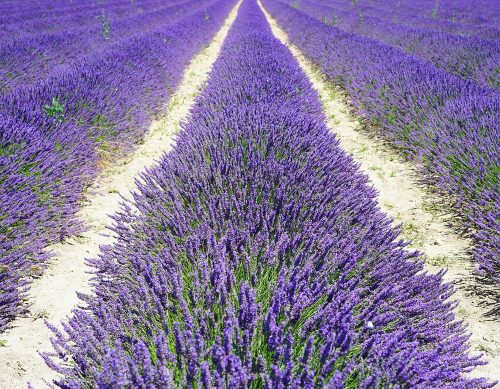
Soil: English lavender grows best in very well-drained, sandy, lean, dry soil with a neutral to alkaline pH. It is not recommended for clay soil or any other type that tends to retain moisture for long. As such, do not amend your soil with compost, humus or manure when planting lavender. If growing it on a slope, make sure to position it near the top where the water will quickly run past. Rock gardens, raised beds and containers can also be good places to grow English lavender, but keep in mind that if you live in zone 6 or colder, lavender might not be able to survive the winter in containers.
Watering: Lavender is a very drought tolerant plant. If you live in the North and receive periodic rainfall, you’re likely to find that it does not require any supplemental water. However, if you live in a hot climate where it does not rain much during the heat of summer, lavender can benefit from about a half-gallon of water once every two weeks while it is forming flower buds. When the flowers are open, watering once per week during peak harvest season can produce a better yield. If you aren’t sure whether or not your lavender plant needs water, err on the side of underwatering rather than overwatering.
Feeding: Save your fertilizer and compost for other plants—lavender will not appreciate it. In fact, if the soil is too rich in nutrients or if you feed it too much, the plants will produce more leaves and fewer flowers. Lavender typically does not need to be fertilized at all, and doing so can make the plant more susceptible to winter damage and disease.
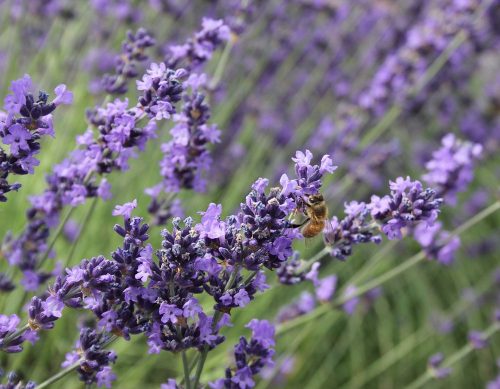
Pests and Diseases: Few pests, including rabbits and deer, bother with lavender but pollinating bees and butterflies enjoy its fragrant blossoms. Unfortunately, it is susceptible to Septoria leaf spot and Phytophthora crown and root rots. Providing good air circulation, using well-drained soil, watering in the morning when necessary, and not watering too frequently can all help to prevent these problems from settling in. Prevention is key since these diseases are difficult to cure.
Harvesting: English lavender typically begins to bloom in early summer but will start earlier in the South. Lavandin blooms a bit later in midsummer. Aim to harvest the blooms when the first few flowers in each spike open. Do so in the morning after the dew has burned off but before the day’s heat settles in if you’re aiming for the best fragrance. You could use the harvested flowers right away in fresh bouquets or for culinary purposes. If you’d prefer to dry them, tie the stems into tight bunches and hang them upside down in a dark place like an unfinished basement or shed and let them dry for a couple of weeks before using.
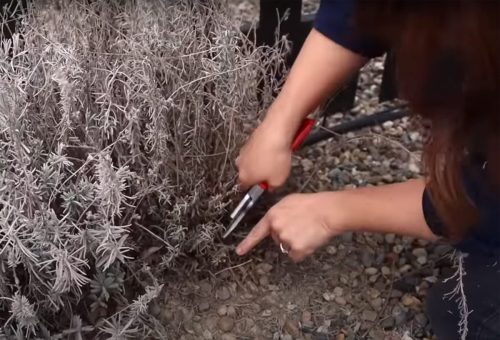
How to Prune Lavender: It’s a good idea to make a standard practice of pruning and shaping your lavender plants every year. Doing so will help to prevent the plants from developing a gnarled, woody base to some extent, and that will extend their longevity before needing to be replaced. Pruning back to healthy buds also helps the plants produce stronger new growth which can result in more flowers.
Like other evergreen perennials, the best time to prune lavender is in early spring when the new growth is just beginning to appear and the plants are showing signs of life near the base. We do not recommend pruning lavender in the fall.
Before you start pruning, it’s important to sanitize your tools with rubbing alcohol or disinfecting wipes to avoid disease issues. Hand pruning is ideal, but if you have a large number to prune you can also use hedge shears or electric pruners. If you’d like to be abundantly cautious, sanitize your tools again between each lavender plant you prune.
Lavender is not like a typical perennial such as daisies or hostas that you cut down to the ground. Doing so can severely damage it. Instead, look down into the plant and cut above the healthy buds any dead growth on the top half to one-third of the plant. Avoid cutting into the woody base—new growth will not come from these old stems. Once you’ve removed any dead top growth, fine tune the clump to give it a rounded shape.
The act of pruning in spring and opening the lower part of the plant up to sunlight will be enough to make the new growth sprout. Within about a month, you will be amazed at how full your lavender will be.
After the first round of blooms is spent, you can prune your lavender again lightly to remove the dried flower stalks. Doing so can sometimes result in new rounds of blooms if your growing season is long enough.
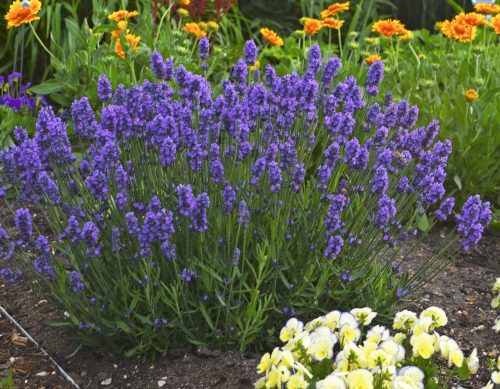
Companions: The most important factor in choosing companions for your English lavender is to find others that enjoy the same growing conditions—namely full sun and lean, dry, well-drained soil with a neutral to alkaline pH. Baby’s breath, blanket flower, globe thistle, lantana, coreopsis, Russian sage, false indigo and sedum all make good companions for English lavender. Whichever you choose, be sure to position them where they will not shade your lavender plants.
What you choose to grow with your lavender might depend on what kind of garden you are growing. Lavender is great for growing in herb and vegetable gardens, cutting gardens, rock gardens, pollinator gardens, children’s gardens and sensory gardens.
Lavender Varieties We Offer:
‘SuperBlue’ Lavandula angustifolia – New this year! Standing just 10-12 inches tall in full bloom, this petite English lavender works well in containers, rock gardens, or planted as a short border around vegetable gardens. It has large flowers for such a small plant and blooms from early summer through late summer. Hardy in zones 5-8.
Sweet Romance® Lavandula angustifolia – This earlier blooming lavender starts to show color in early summer and does not require a cold winter’s rest to be able to bloom well, making it a great choice for southern gardens. At 12-18 inches tall, it makes a nice short hedge around a patio or in front of a shrub. Its flowers are the deepest violet purple of any lavender we offer. Hardy in zones 5-9.
Phenomenal® Lavandula x intermedia – This extra-large lavender is the variety you need if you are looking to fill a lot of space or harvest for lavender wands. Its long stems are perfect for cutting and its fragrant, purple flower spikes exude a classic lavender fragrance. A single plant can easily reach 2 – 2 ½’ tall and 4 – 4 ½’ wide. This is also our most cold hardy lavender, rated for zone 4-9.

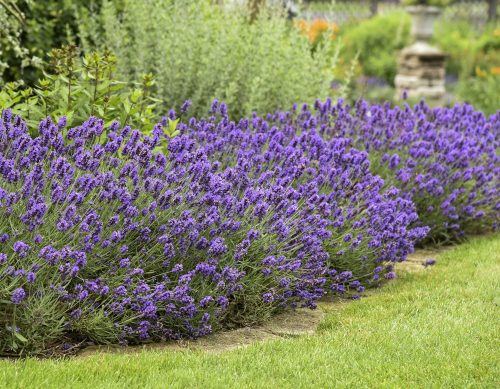
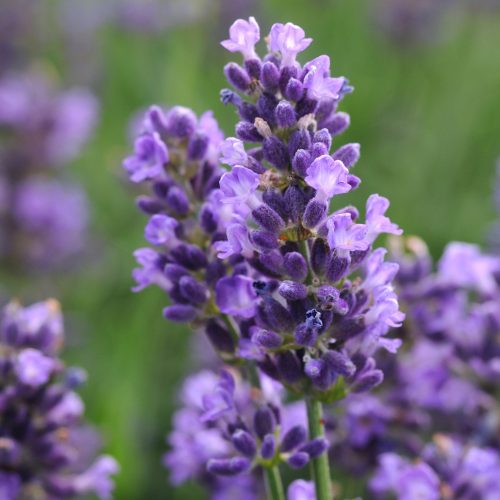
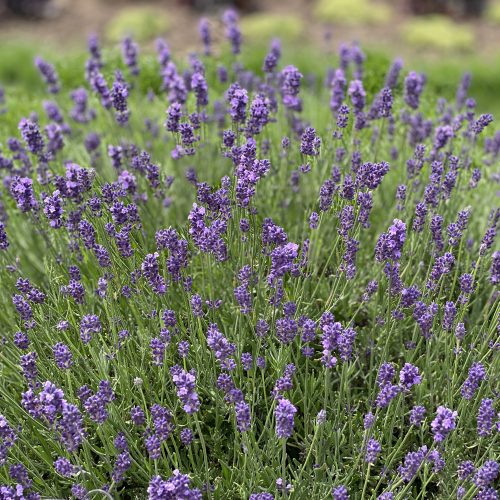
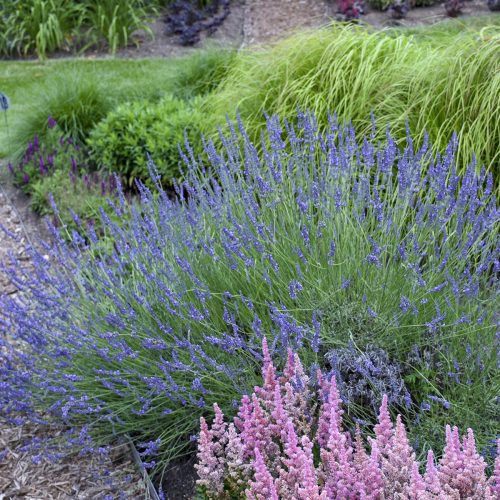
5 thoughts on “How to Grow and Prune Lavender Plants”
Hi,last year I grew french lavender in a bedding border it grew bloomed. This year it’s just woody sticks. I’ve left it hoping. The ground is abit clay and I did put grit and sand and mulch down,compost. This year I bought English lavender blooming but I want to keep them living. Tip tip?
Lavender like to be in well drained soil. It is possible that the clay maybe holding too much water. Also make sure that your zone is in the hardiness range for this plant.
I purchased 3 phenomenal lavender from Garden Crossings last summer, and planted them in my amended clay soil to help it with drainage. I was so impressed how beautiful they were right through the winter with their beautiful blue foliage. I trimmed them just a little in the spring, and have had a tremendous show of flowers this summer. After the first flush, I trimmed them again and they are still pushing more flowers. I am very impressed with this lavender.
I am in Zone 6, NE Indiana.
I can relate to that. I’m still a little concerned, but last year in late Summer, I carefully pruned and shaped mine with a hedge trimmer. Last year‘s woody plant exploded with blooms this year! I’ve experienced the biggest harvest ever and the plant, which is at least 6 feet in diameter, appears to be filling-in beautifully. I hope you and your friend have the same good luck.
I’m trying my best to help a neighbor revive a lavender garden her husband planted before passing away. There is a LOT of wood underneath but the actual top of the plant is beautiful and full. But it hasn’t bloomed in 3 years (coincidentally, since his passing!) Any help or ideas are welcome! I grow lavender in my herb garden so I am familiar with it but NOT a pro!